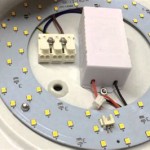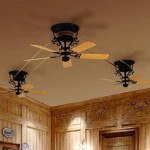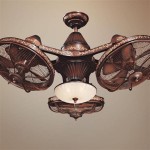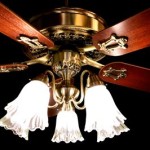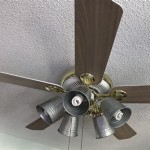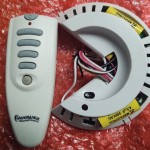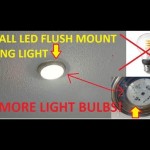How To Remove Popcorn Ceiling Without Water Damage
Popcorn ceilings, also known as textured ceilings, were a popular choice in residential construction for several decades. Primarily, they served to hide imperfections on the ceiling surface and add a degree of acoustic dampening. However, interior design preferences have evolved, and many homeowners now seek to remove these textured surfaces, aiming for a smoother, more modern aesthetic. While water is often used to soften the texture for easier scraping, potential water damage to the ceiling and surrounding areas presents a significant concern. Removing a popcorn ceiling without causing water damage requires careful planning, meticulous execution, and the right tools and techniques.
The process of removing a popcorn ceiling can be labor-intensive and messy. It is imperative to take appropriate safety precautions, including wearing safety glasses, a dust mask, and covering exposed skin. Airborne dust and debris generated during the removal process can pose a health risk, particularly if the popcorn ceiling contains asbestos. Before commencing any work, it is crucial to test the ceiling material for asbestos. If asbestos is present, professional abatement is required and is legally mandated in many jurisdictions. Attempting to remove asbestos-containing materials without proper training and equipment is dangerous and illegal.
Assuming the popcorn ceiling is asbestos-free, the removal process can proceed. The primary goal is to soften the textured surface without saturating it, minimizing the risk of water damage. The key is to use a gentle application of moisture and to work in small, manageable sections.
Preparation and Protection
The first and arguably most crucial step is preparation. This involves protecting the surrounding areas from dust, debris, and potential water damage. Begin by removing all furniture from the room. If removing the furniture is not feasible, cover it completely with heavy-duty plastic sheeting. Protect the flooring with drop cloths made of canvas or plastic. Secure the drop cloths with painter's tape to prevent them from shifting during the work.
Next, remove or cover any light fixtures or ceiling fans. Turn off the power to the room at the circuit breaker before working with electrical components. Cover electrical boxes with plastic sheeting and secure them with painter's tape. This will prevent dust and debris from entering the electrical system. Remove window treatments such as curtains or blinds. If removing them is not possible, cover them with plastic sheeting.
Seal off the room from the rest of the house. This can be achieved by hanging plastic sheeting over doorways and securing it with painter's tape. This will prevent dust and debris from spreading to other areas of the house. Ensure that the room is well-ventilated. Open windows, if possible, and use a fan to circulate air. However, be mindful of creating drafts that could spread dust.
Gather all necessary tools and materials. These include a pump sprayer, a wide putty knife or drywall taping knife, a ladder, safety glasses, a dust mask or respirator, plastic sheeting, drop cloths, painter's tape, and garbage bags. A joint compound pan can be helpful for collecting scraped material. Having all tools readily available will streamline the removal process.
Moistening the Popcorn Texture
The effectiveness of popcorn ceiling removal largely depends on softening the texture adequately without over-saturating it. Water is generally used to achieve this, but the application method is critical. A garden pump sprayer is ideal for this purpose. Fill the sprayer with warm water. Avoid using excessive amounts of soap or detergent, as these can make the surface slippery and difficult to scrape.
Before applying water to the entire ceiling, test a small, inconspicuous area. This will allow assessment of how easily the texture softens and how quickly the water penetrates the ceiling. Spray the test area lightly and wait for a few minutes. Then, use the putty knife to scrape the texture. If it comes off easily without excessive force, the water application is sufficient. If the texture is still hard and difficult to scrape, slightly increase the amount of water used in subsequent applications.
Work in small sections, typically no larger than 4x4 feet. This allows for better control and prevents the water from drying out before the texture can be scraped. Spray the section lightly and evenly. Allow the water to soak in for a few minutes, but do not let it dry completely. The goal is to soften the texture without saturating the drywall beneath. Observe the ceiling for any signs of excessive water absorption, such as drips or discoloration. If these occur, reduce the amount of water used.
After the water has soaked in, test the texture with the putty knife. If it scrapes off easily, proceed with scraping the entire section. If not, wait a few more minutes and test again. Avoid using excessive force, as this can damage the drywall beneath. If the texture is particularly stubborn, consider using a specialized popcorn ceiling scraper. These tools are designed to remove the texture efficiently without damaging the underlying surface.
Continuously monitor the moisture level of the ceiling. If the water begins to dry out, reapply it lightly. Overlapping the sprayed areas slightly will ensure even coverage. Be particularly careful around seams and corners, as these areas are more prone to water damage. If mold or mildew is present, address it with a mold-killing solution before proceeding with the removal process.
Scraping and Cleanup
Once the popcorn texture is adequately softened, the scraping process can begin. Use a wide putty knife or drywall taping knife to scrape the texture from the ceiling. Hold the knife at a shallow angle to minimize the risk of gouging the drywall. Apply consistent pressure and scrape in long, even strokes. Overlap each stroke slightly to ensure that all of the texture is removed.
Collect the scraped material in a joint compound pan or garbage bag. This will help to minimize the mess and make cleanup easier. Work in a systematic manner, completing each section before moving on to the next. Be patient and avoid rushing the process, as this can lead to mistakes and damage to the drywall. If the texture is particularly thick or uneven, it may be necessary to make multiple passes with the putty knife.
After scraping each section, inspect the drywall for any damage. Fill any gouges or imperfections with joint compound. Allow the joint compound to dry completely before sanding it smooth. Use a fine-grit sandpaper to avoid scratching the drywall. Wear a dust mask while sanding to protect from airborne particles.
Once the entire ceiling has been scraped and repaired, clean up the debris. Carefully remove the drop cloths and plastic sheeting, being mindful of any dust or debris that may have accumulated on them. Dispose of the debris properly. Vacuum the room thoroughly to remove any remaining dust and particles. Wipe down the walls and trim with a damp cloth to remove any lingering residue.
After the room is clean, inspect the ceiling for any remaining imperfections. Apply a coat of primer to the ceiling to seal it and prepare it for painting. Choose a high-quality primer that is designed for use on drywall. Allow the primer to dry completely before applying the paint. Apply two coats of paint to the ceiling, allowing each coat to dry thoroughly before applying the next. Choose a paint that is specifically designed for ceilings. This will help to create a uniform and durable finish.
Proper disposal of the removed popcorn texture is also important. If the material is known to be asbestos-free, it can generally be disposed of as regular construction waste. However, it is advisable to check with local regulations to ensure compliance. If there is any suspicion that the material contains asbestos, it must be handled and disposed of according to strict environmental regulations. This typically involves sealing the material in airtight bags and transporting it to a designated disposal facility.

How To Remove Popcorn Ceilings Easily The Nifty Nester

4 Diy Methods To Remove Popcorn Ceilings Erin Zubot Design

How To Remove Popcorn Ceilings In 7 Easy Steps Architectural Digest

How To Remove Popcorn Ceilings Easily In 5 Minutes

12 Tips On How To Remove Popcorn Ceiling Faster And Easier

The Joy Of Popcorn Ceiling Removal Centsational Style

Popcorn Ceiling How To Remove An Ugly Stain Drywall Repairman Water Damage Repair

3 Secret Tricks To Removing Popcorn Ceilings Your Home Renewed

How To Remove Popcorn Ceilings In 30 Minutes

How To Remove Popcorn Ceilings In 30 Minutes
Related Posts

